When you look at photos of people in super-deep backbends, it often looks like they have a sharp 90 degree kink in their lower back. It looks that way because they do. They have a hyper-mobile lower back. That certainly seems advantageous for deep backbends, but it is not something you want to emulate if your back doesn’t do that naturally. And even if it does do that, it might still cause problems for your lower back. This week we will focus on how to align our hips to create more balanced, more spacious, and safer backbends.
In order for mere mortals like us to deepen our backbends, we need to focus on opening everything else, which includes our upper back and our shoulders (next week’s theme), and our hip joints. The beauty of learning how to align your hips in backbends to get more movement out of your hip joints is that it also is the key to protecting your lower back.
You aren’t done when your feet touch the back of the head
Of course, people with hyper-mobile lower backs would equally benefit from increasing mobility in their hips, but their hyper-mobile lower back makes it hard to bother. After all, if your feet are touching the back of your head, you are done, right? Wrong, of course. It’s not about being done, it’s about being balanced. Look at the photos of the people with their feet touching their heads, and see how many of them haven’t opened their hips. (Look at the angle between their pelvis and their thighs. If the thighs aren’t pointing backwards relative to the pelvis, the person isn’t using their hip joints. BKS Iyengar is one of the exceptions in the collage). Do the poses of the people whose feet are touching their heads actually look better? Are they more balanced, more spacious, more free? Are they enjoying themselves more?
Being “good” at backbends makes it harder to effectively align your hips
A hyper-mobile lower back is actually an impediment to finding true alignment and balance in a deep backbend. So the next time you envy the person on the mat next to you with their toes tickling the back of their scalp, look at their hips. Did they get there through a balanced opening in all the relevant joins, or did they simply fold in half at the lower back? In the latter case, your envy is probably unwarranted. (Though you shouldn’t scoff, either. It’s just a fact that all bodies are different, and even with a hyper-mobile lower back it is possible to come into a balanced backbend. It’s just that the challenges are a bit different.)
Envying someone with a hyper-mobile lower back is just an example of our tendency to be achievement-oriented rather than experience-oriented. And if your whole approach to yoga is achievement-oriented, then you are missing out on the real gifts of yoga (such as the ability to experience joy in the here and now even under less than ideal circumstances). So open your hips and keep your lower back safe. Do both by toning your lower abs and pressurizing your abdominal cavity, and stop worrying about where your feet are. Learning to stop obsessing where your feet are may actually prove more difficult than getting your feet to your head. But it is also much more worthwhile.
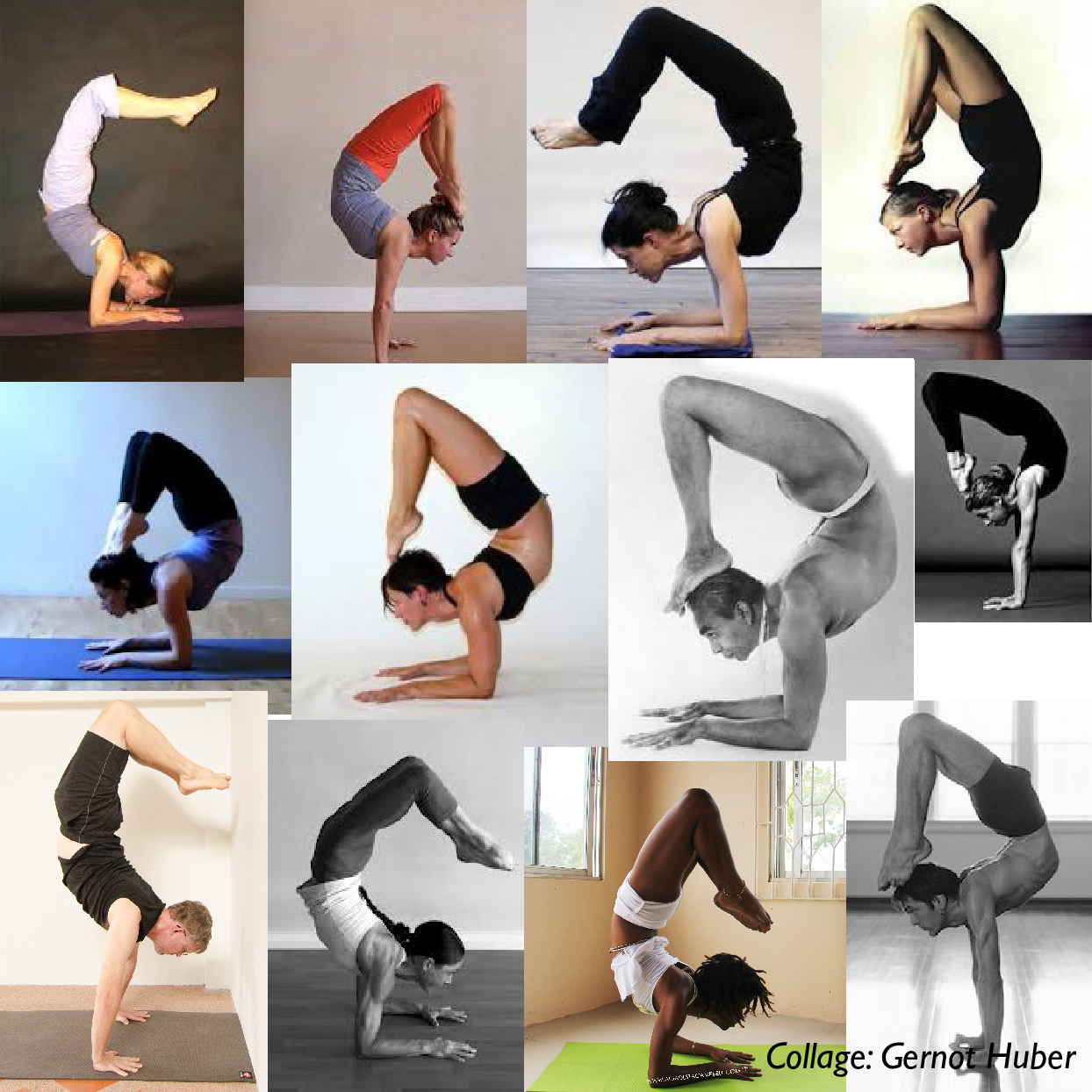
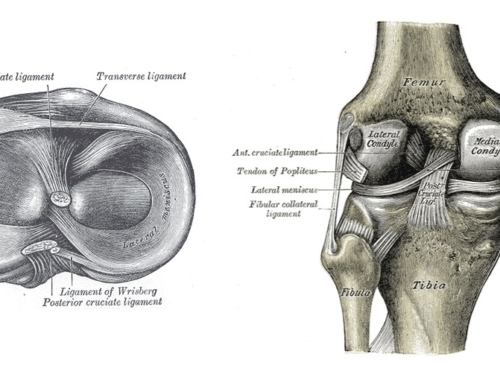
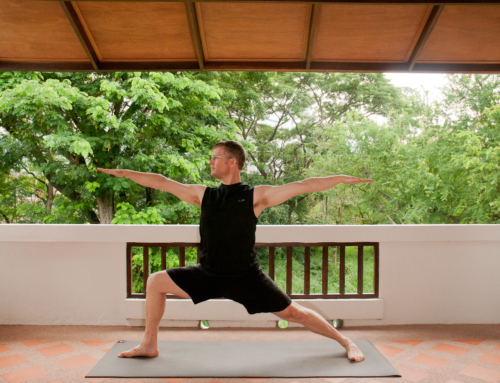
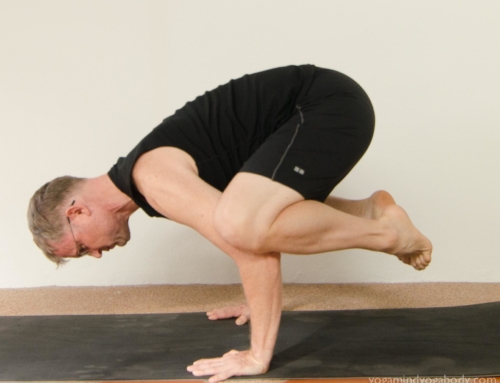
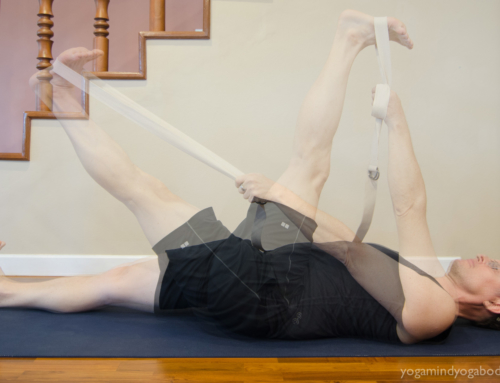
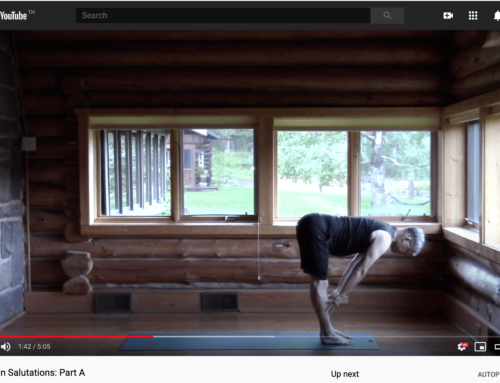
How do you open the hips??
Good question. From my observations of myself and my students, the key to opening the hips in extension (in other words, in backbends) is learning how to engage your abs, especially your lower abs, the transversus abdominis. Instructions to tell you to draw your lower belly up and in are designed to help you do that. Successfully engaging your lower abs is necessary for stretching your psoas. A tight (or over-contracted) psoas is probably most responsible for lack of extension in the hip joints in most humans. Part of the problem is that you can’t really feel your psoas being stretched (it just doesn’t have enough of the required sensors). When you engage your abs to stretch your psoas the overall feeling is that it limits your backbending (because it limits the extension in the lumbar arch).
So if your main focus is bending farther back RIGHT NOW, then stretching your psoas seems completely counterproductive. But if you want to create more distributed, safer, more spacious-feeling backbends long term, then learning to engage your abs to stretch your psoas is absolutely worthwhile.